Biography
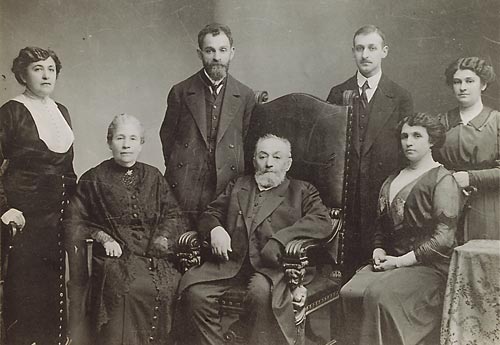
1866
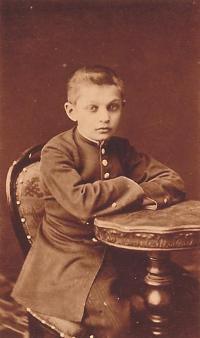 Lev Isaakovich Schwarzmann (alias Lev Shestov) was born in Kiev on the 31st January (or the 13th February according to the old Russian calendar), the first son of a respected Jewish family. The father, Isaak Moiseevich Schwarzmann came from a modest background, but he established and ran an important textile business. His house was a meeting place for the most prominent cultural figures of Kiev and St. Petersburg at that time. He had a strong personality, and the reputation of a free thinker in the Jewish community. Isaak Moiseevich's outstanding knowledge of Hebrew literature and, more generally, of the Jewish tradition, made a lasting impression on Lev Isaakovich, whose later work significantly evolved around the paradoxical alliance between Judaism and Christian Orthodoxism (as opposed to the Ancient Greek rationality).
Lev Isaakovich Schwarzmann (alias Lev Shestov) was born in Kiev on the 31st January (or the 13th February according to the old Russian calendar), the first son of a respected Jewish family. The father, Isaak Moiseevich Schwarzmann came from a modest background, but he established and ran an important textile business. His house was a meeting place for the most prominent cultural figures of Kiev and St. Petersburg at that time. He had a strong personality, and the reputation of a free thinker in the Jewish community. Isaak Moiseevich's outstanding knowledge of Hebrew literature and, more generally, of the Jewish tradition, made a lasting impression on Lev Isaakovich, whose later work significantly evolved around the paradoxical alliance between Judaism and Christian Orthodoxism (as opposed to the Ancient Greek rationality).
1880 - 1883
Secondary education in Kiev and Moscow (- following his early involvement in a political affair he leaves Kiev, and finishes his studies in Moscow).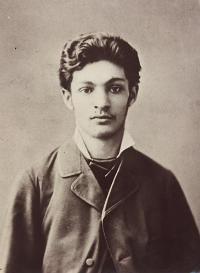 1884
1884
He enrolls in the Faculty of Mathematics, but soon transfers to the Faculty of Law at the University of Moscow. Another conflict with the authorities, this time in the guise of a well-known Inspector of Students, forces Lev Isaakovich to return to Kiev.
1889
He finishes his studies at the Faculty of Law of Kiev University, and graduates with the title 'Candidate in Law' [kandidat prav]. He prepares a doctoral thesis on the working-class legislation in Russia, but is not awarded the title of doctor of law, because the content of his dissertation is judged 'revolutionary', and leads to its supression by the Committee of Censors in Moscow. Nevertheless, Kiev University accepts his thesis, and his name is inscribed on the official advocates list at St. Petersburg, but Lev Isaakovich has little interest in pursuing a career in law.
1890-1891
He does his military service, and for a short time works as a trainee with an advocate in Moscow.
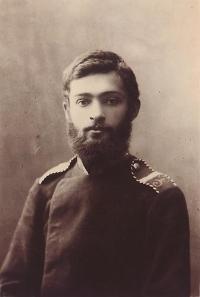 1891-1892
1891-1892
He returns to Kiev, in order to save his father's textile firm from bankruptcy. This is also a time of inner turmoil and moral dilemmas for Lev Isaakovich. He starts a clandestine relationship with Aniuta Listopadova, a young woman of Russian Orthodox religion, who is employed by the Schwarzmann family. In 1892, Aniuta gives birth to a son, Serghei Listopadov, and this further exacerbates Lev Isaakovich's struggle to uphold his own ideals against the inflexible authority of his father.
1892-1894
Continues working in the family business, and publishes a few articles on financial and economical issues. This is an important formative period, marked by intense reading of literature and philosophy works, and the discovery of his vocation as a writer. He frequents the literary circles of Kiev and Moscow, and meets a young talented writer, Varvara Grigoryevna Malakyeva-Mirovitch, who was later to spend the summer of 1895 with the Schwarzmann family, as tutor to the children of Lev Isaakovich's sister, Sophia Balahovskaya.
1895
Starts publishing his first (anonymous) writings on literary and philosophical topics: 'Вопрос совести (O Владимире Соловиове)' [The Problem of Consciousness (On Vladimir Soloviov)] and 'Георг Брандес о Гамлете' [Georg Brandes on Hamlet]. Towards the end of the year, he suffers a nervous breakdown (partly due to the increasing rift between his personal aspirations and the pressure of managing the family firm). However, the enigmatic manner in which he later described this event in his diaries points to a much deeper personal crisis, probably related to a series of intellectual and emotional disappointments. Above all, the acknowledgement of his infatuation with Varvara Grigoryevna and her adamant refusal to believe him seems to have caused him considerable heartache (as the exchange of letters between them indicates).
1896
He travels abroad (Switzerland) for treatment. He devotes his time to literary writing. His journey across Europe takes him to Viena, Karlsbad, Berlin, Tréport, Paris, München, and again to Berlin. He starts working on his first book, Шекспир у его критик Брандес [Shakespeare and His Critic Brandes]. In Rome, he meets Anna Eleazarovna Berezovsky, a student in medecine, who will become his wife.
1897
He settles in Rome, and finishes writing Шекспир у его критик Брандес [Shakespeare and His Critic Brandes]. He marries Anna Eleazarovna without his parents' knowledge (as they would have never accepted that their son marry an Christian Orthodox woman). The same year, their first daughter, Tatiana is born. During the next ten years, the couple will live in different cities to avoid disclosing their marriage to Lev Isaakovich's parents.
1898
He publishes Шекспир у его критик Брандес [Shakespeare and His Critic Brandes] at his own expense at A. Mendeleevich Publishing House in St. Petersburg. This is the first book he signs with the pseudonim Lev Shestov, that signals the symbolic break with the authority of the father - as mentioned in the author's conversations with his friend, Aron Steinberg, and recorded by the latter in Друзия моих ранник лет [My friends from the early years]. He leaves Italy and goes to Switzerland. He works on his second book, Добро в учении гр. Толстого и Фр. Нитше [The Good in the Teaching of Count Tolstoy and of F. Nietzsche], which he finishes towards the end of the year.
He returns to Russia. His earlier volume on Shakespeare and Brandes is more or less ignored by the critics.
1899
He spends time in Kiev and St. Petersburg, and establishes links with the literary circles. Despite great difficulties, he is able to publish his second book on credit, Добро в учении гр. Толстого и Фр. Нитше [The Idea of the Good in Tolstoy and Nietzsche], at the Stasjulevitch print house in St. Petersburg, thanks to Vladimir Soloviov's recommandation (- this first edition of the book is dated 1900).
1900
In January, he leaves Russia and goes to Switzerland and Italy, where he concentrates on his literary activities, and in particular, on the writing of his next book, Достоевский и Нитше [Dostoevsky and Nietzsche]. His daughter, Natalia, is born.
N. K. Mihailovki publishes two important essays on Добро в учении гр. Толстого и Фр. Нитше [The Idea of the Good in Tolstoy and Nietzsche]in the February-March issue of the magazine Русское богатство, which attract the attention of the critics and of the general public. A debate on Shestov's book is organised in Kiev, and is attended, among others, by G. Tchelpanov and Vodovozov. In May the same year, S. Diaghilev, the editor-in-chief of Мир искусстба [The Art World] invites Shestov to contribute to this journal. Shestov sends him the manuscript of his book, Достоевский и Нитше [Dostoevsky and Nietzsche], as well as two polemical articles on D. Merejkovsky's book, Лев Толстой и Достоевский [Lev Tolstoy and Dostoevsky].
1901
In September, he returns to Kiev, where he stays until 1908. He works in the family business, and travels to Moscow and St. Petersburg. He gives talks, participates in debates. In Kiev, he forms a strong friendship with N. Berdiaev, S. Bulgakov, A. Lazarev, G. Celpanov. He is also close to a number of literary personalities of St. Petersburg, such as D. Merejkovsky, V. Rozanov, Z. Vengherova, and later, A. Remizov (one of his life-long friends and correspondents).
1902
Достоевский и Нитше [Dostoevsky and Nietzsche] is published in six consecutive issues of Мир искусства [The Art World].
1903
Достоевский и Нитше [Dostoevsky and Nietzsche] is published in book form (also including the study of Shakespeare's play, 'Julius Caesar') at Stasjulevitch, in St. Petersburg. He devotes his time to studying, reading and preparing a new book, that will form the basis of his Апофеоз беспочвенности [The Apotheosis of Groundlessness], but his work in the family business prevents him from finishing this volume.
In February, he publishes in the magazine Мир искусства a virulently critical article on the second volume of D. Merejkovsky's work, Лев Толстой и Достоевский [Lev Tolstoy and Dostoevsky].
In Spring, he leaves to Switzerland in order to continue working on Апофеоз беспочвенности [The Apotheosis of Groundlessness].
In November he returns to Kiev because of his father's illness.
1904
He continues writing Апофеоз беспочвенности [The Apotheosis of Groundlessness]. He works in his father's company.
1905
In February, Апофеоз беспочвенности [The Apotheosis of Groundlessness] is published, and becomes the subject of a fierce controversy in Russia. Book-reviews by I. Eihenvald, N. Berdiaev, A. Remizov, and V. Rozanov are published in some of the most prestigious magazines of the time.
In March, Shestov publishes an article of Tchekhov, 'Творчество из Ничего' [Creation out of nothing], which was the best ever exegesis of the well-known writer's work, according to I. Bunin. Very positive comments from R. Ivanov-Razumnik and A. Bel'yi. N. Berdiaev publishes a substantial study of Shestov in the magazine Вопросы жизни. Several articles devoted to Shestov will come out in the same magazine (such as V. Bazarov's and V. Rozanov's articles that were of particular interest).
1906
In January he publishes an article on Dostoevsky.
1907
In April, he publishes a number of aphorisms and the article, 'Похвала глупости' [In Praise of Foolhardiness], devoted to N. Bedyaev.
1908
The family business is turned into a joint stock company, and Shestov becomes its managing director, in the hope that this will give him more freedom.
In September, he publishes Начала и концы [Begginings and Endings], a collection of articles, which had come out in various magazines, in between 1905 and 1907. The same month, a substantial study on Shestov, by R. Ivanov-Razumnik is published (О смысле жизни, 'On the Meaning of Life', St. Petersbourg: M. Stassiulevitch, 1908, pp. 162-256).
In October, he begins writing Великие кануны [The Great Vigils] in Freiburg-in-Brisgau (Jacobistrasse 9), where he has settled with his family.
During the last two months of the year, two articles containing violent attacks against Shestov's works are published: the first, by D. Filosofov, in Московский еженедельник (15th November), and the second, by S. Frank, in the daily Слово (10th December).
1909
In January, he publishes a study on the occasion of Tolstoy's 80thanniversary: 'Разрушающиий и созидающий миры' [The Destroyer and the Builder of Worlds].
1910
On the 2nd of March he visits Tolstoy at Yasnaya Polyana.
In April, he leaves Kiev and settles in Switzerland, on the shores of Lake Leman (in Coppet, at the Villa des Saules), where he will live with his family until 1914. He thus comes to enjoy a period of peace, while managing the family business from afar. He continues the studies that he had begun in Freiburg: Greek philosophy, Medieval mystic thinkers, Luther and theologians such as A. von Harnack, H. Grisard, H. Denifle.
At the end of the year, his volume, Великие кануны [The Great Vigils] (mainly gathering the articles he published in 1909 and 1910), is published at Shipovnik. The editors also propose to publish an edition of his complete works.
1911-1912
Period of study in Coppet.
1913-1914
He writes Sola Fide [Only by Faith], which highlights the philosophical rather than literary orientation of his writing.
1914
In July, he returns to Russia together with his family. Because of the outbreak of war, his library and the unfinished manuscript of Sola Fide are seized at customs, and sent back to Switzerland. He will only regain possession of them when he emigrates from Russia in 1920.
He settles in Moscow (Novokoniouchenyi per. nr. 14), and establishes contacts with the literary and philosophical milieux, where he meets again many of his old friends (Viatcheslav Ivanov, S. Bulgakov, N. Berdiaev, G. Shpet, G. Tchelpanov, M. Guershenson, S. Lourié, N. Butova, the sisters Evguenya and Adelayda Guertsyg etc.)
1915
He writes Potestas Clavium [The Power of Keys], in which he takes up a number of topics already discussed in Sola Fide.
In February, he becomes member of the Moscow Society of Psychology, one of the centres for the study of religious philosophy in Russia.
In November, he gives a talk entitled 'Potestas Clavium' to this Society.
1916
On the 4th of November he gives a talk about Viatcheslav Ivanov, that arouses fiery debates.
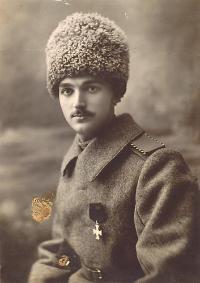 1917
1917
Towards the end of the year, he publishes an article on E. Husserl, entitled 'Memento Mori'. The February Revolution finds him in Moscow. He doesn't share in the general enthusiasm. He publishes 38 aphorisms in various magazines, and writes little. The political climate is stiffling. He is still in Moscow during the October Revolution.
His son, Serghei Listopadov, who was serving in the army, is reported dead in action. Shestov goes to the frontline but, despite sustained efforts, is unable to find him.
1918
He leaves Moscow, where life has become too difficult, and settles in Kiev, at his sister, Sophia Balachovskaya.
In winter, he works as a professor with the Popular University of Kiev, and teaches a course in Greek philosophy, which he will continue the following year.
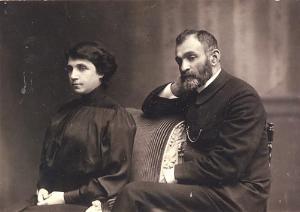 1919
1919
In January he writes the final draft of Potestas Clavium, which will only be published in 1923, in Berlin.
In Autumn, he leaves with his family to Yalta (Crimea), where he will wait for an opportunity to go to Switzerland. He is Visiting Lecturer at the University of Simferopol.
1920
In January, he moves with his family to Sevastopol. There, he is able to secure places on a French cargo boat that takes them to Constantinople. From there, they travel to Genoa and Paris, and then to Geneva. In Geneva, they live at Shestov's sister, Mme Lowtzky. Shestov regains possession of his library and of the manuscript of Sola Fide. He copies the end of the first part, as a separate chapter devoted to Tolstoy, he makes a few changes and gives it the provisional title Откровения смерти [The Revelations of Death], which he will later change to 'Ha страшном суде' [The Final Judgment]. The former title was already assigned to a volume which included the article on Tolstoy, as well as an essay on Dostoevsky (see bibliography). Shestov will not publish Sola Fide during his lifetime, perhaps because some of its themes had been taken up and developed in Potestas Clavium. The second half of Sola Fide was nevertheless published in French translation in 1957, and the Russian edition of the book came out in 1966 (based on an unfinished manuscript found in the Shestov archives after his death).
This is also a financially difficult time for Shestov who looks after the members of his family that have emigrated, and is constantly worried about events in Russia.
1921
In April, he leaves Geneva and settles in France, at Clamart. This marks the beginning of his longest time in exile, which will last until his death.
From May to September he writes an article devoted to Dostoevsky's centenary, 'Преодоление самоочевидностей' [Overcoming self-evidences].
In November, he settles with his family in a modest flat in Paris (7, rue Sarasate, 15ème).
1922
In February, a substantial part of his article on Dostoevsky ['Преодоление самоочевидностей', 'Overcoming self-evidences'] is published in the Nouvelle Revue Française. This writing will play a significant part in Shestov's reception in France. Boris de Schloezer, his life-long friend and most asiduous translator of his work in French, is the author of the translation, and of the introduction to Shestov's article for the NRF. The February issue of the French magazine also included articles by Gide and J. Rivière, and several texts by Dostoevsky.
He gives a series of talks on Dostoevsky, as well as on Ancient Philosophy at the Society for Religion and Philosophy and at the Popular University.
He frequents the Russian émigré writers, and is a member of theAcademic Group, set up by the émigré professors. The artist Sorin paints his portray (presently at the Metropolitan Museum of New York). He establishes contacts with the French literary circles. Takes several trips to Berlin, where an important group of Russian émigrés writers had settled. The publishing house Skify, based in Berlin, plans to publish several of his works in translation.
In April he is appointed professor in the Faculty of Russian Studies at the University of Paris (the Russian section of the Institute of Slavonic Studies). He will lecture there on philosophy from April 1922 to March 1936.
In October, Boris de Schloezer publishes an important study on Shestov ('Un penseur russe: Léon Chestov') in Mercure de France.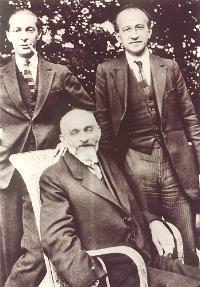 1923
1923
In May, Les Révélations de la mort [Revelations of Death] is published at Plon, in the foreign authors collection, directed by Charles du Bos.
In June, Shestov's study, 'Descartes et Spinoza', is published in theMercure de France, only two years before its publication in the original Russian, in the magazine Современие записки, some of whose editors were opposed to his ideas.
In June, La Nuit de Gethsémani [The Night in the Garden of Gethsemany] is published at Grasset. Daniel Halévy, the director of the Cahiers Verts had asked Shestov to write this essay for Pascal's 300thanniversary.
Shestov's first two books in French translation enjoyed a warm reception, and were reviewed in Mercure de France (by Masson Oursel) and La Nouvelle Revue Française (by A. Thibaudet).
In between the 24th August and the 3rd of September, he takes part in the Pontigny summer colloquium on the topic, 'Le Trésor poétique réservé ou l'intraduisible' [The Reserved Poetic Treasure or the Untranslatable], at the invitation of the director of the Décades de Pontigny, Paul Desjardin, and of the editor of Plon, Charles du Bos, both of whom become his friends.
He gives a series of lectures at the Sorbonne on Dostoevsky's and Pascal's Ideas, which he will repeat during the following academic year, 1924-5.
1924
In Spring, he participates for the first time to the regular meetings organised by the philosopher and writer, Jules de Gaultier. There he meets the Romanian-born French writer, Benjamin Fondane, who had published a series of articles on Shestov before coming to Paris. Fondane is going to become Shestov's close friend and only disciple, who greatly contributed to the popularization of his ideas in France, and wrote numerous articles as well as a book devoted to Shestov's memory, Rencontres avec Chestov (Meetings with Shestov).
In November, he moves to a new address in Paris, at 41, rue de l'Abbé Grégoire.
1926
In January, he moves to his sister, Mme Sophia Balachowsky, who lived in a spacious flat at 1, rue d'Alboni, 16ème.
He begins a long-term collaboration with the Révue philosophique, run by Lucien Lévy-Bruhl. His first article, Memento mori, which he had published in Russia in 1917, comes out in French translation in the January-February issue of Revue philosophique, and is one of the first interpretations of Husserl's thought in France. Jean Hering responds to Shestov's existential critique of Husserl, by writing the article 'Sub specie aeterni'. He sends the manuscript of his article to Chestov, who writes 'Что такое истина'. Their polemic marks one of the most significant moments of Husserl's early reception in France.
He strengthens his links with the philosophical and literary circles in France and Germany. He organises receptions for writers and philosophers in Paris. He often travels to Germany, where he is a member of the Kantgesellschaft and of the Nietzschegesellschaft.
The Pléiade publishing house undertakes the project of publishing Shestov's complete works. Despite his growing reputation, Shestov finds it very difficult to get published, and only three volumes of the Pléiade edition will come out during his lifetime.
He starts writing На весах Иова [In Job's Balances], which he will finish the following year. He also writes 'Скованный Парменид' [Parmenides in Chains], which will later be included in his book, Афины и Иерусалим[Athens and Jerusalem].
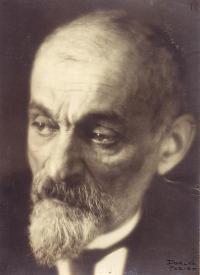 1927
1927
Shestov's second article on Husserl, 'Qu'est-ce que la vérité' [What is Truth], is published in the January-February issue of the Revue philosophique. Several months later, the same article comes out in German translation, in the Philosophischer Anzeiger (nr. 1, 1927), in which Jean Hering's article is also published (before its publication in France, in Revue d'histoire et de philosophie religieuse nr. 4, July-August 1927).
1928
In between the 15th and the 23rd of April, Shestov participates in a philosophy conference in Amsterdam, where he gives a talk about Plotinus, and meets Husserl, who is interested in Shestov's articles on phenomenology, despite their virulent criticism. The two philosophers will become close friends, and will continue to see each other regularly until 1933, either in Freiburg, where Husserl lives, or in Paris, where Husserl is several times invited to give talks, following arrangements made by Shestov.
Towards the end of the year, Shestov gives a conference on Tolstoy in Freiburg, which is attended by both Husserl and Heidegger. After the conference, Shestov meets Heidegger and talks to him about existential philosophy at Husserl's house.
Shestov discovers his deep intellectual affinities with Kierkegaard's work, thanks to Husserl.
1929
In April, he moves to a new address in Paris: 3, rue Letellier, 15ème.
In May, he publishes На весах Иова [On Job's Balances] which gathers a number of studies that he had written in Geneva and Paris in between 1920 and 1927, and that had been partly published.
1930
In September he moves to Boulogne-sur-Seine (at 19, rue Alfred Laurent), following his daughters' marriage. He will stay at this address until his death. He lives relatively withdrawn from the world, and although he is often ill, he remains active.
1931
The publication of J. Suys's doctoral thesis on Shestov, in Amsterdam.
1932
In May, he finishes writing 'В Фаларийском быке' [Inside the Bull of Phalaris], which he had probably began in 1930, and whose last five chapters are devoted to Kierkegaard.
1935
He finishes writing his study of Kierkegaard, Киркегард и эгзистенциальная философии [Kierkegaard and Existential Philosophy], which he had begun in 1930 or
1931.
In February, he finishes his study, 'О средневековой философии' [On the Philosophy of the Middle Ages], devoted to Etienne Gilson's book, L'Esprit de la philosophie médievale [The Spirit of Medieval Philosophy].
On the 5th of May he gives a conference on Kierkegaard and Dostoevsky, which will become the preface of his book on Kierkegaard.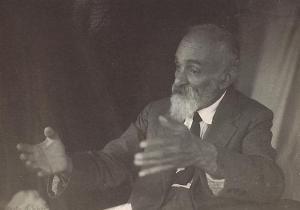 1936
1936
Berdiaev, A. Lazarev, B. Fondane, A. Remizov, and many others publish articles on the occasion of Shestov's 70th birthday. The Committee of Lev Shestov's Friends is set up (the president is Lévy-Bruhl, the secretary is B. de Schloezer, and among the members are: N. Berdiaev, P. Desjardin, A. Dobry, N. Eitingon, J. de Gaultier, A. Lazarev, J. Paulhan). The aim of the committee is to launch a subscription in order to gather the funds necessary for the publication of the French edition of Shestov's book on Kierkegaard, which he had finished the previous year.
In between the 23rd of March and the 19th of May, he travels to Palestine, where he is invited to give a series of talks.
In July the volume Kierkegaard et la philosophie existentielle is published at J. Vrin (the Russian original will only be published in 1939).
1937
In between the 3rd of April and the 1st of May, he gives five conferences at Radio Paris, entitled L'Oeuvre de Dostoevsky [Dostoevsky's Work].
In between the 21st of October and the 25th of November he gives another series of five conferences on Kierkegaard - philosophe religieux [Kierkegaard - Religious Philosopher], at Radio Paris.
At the end of December, he suffers of an intestinal haemorrhage, and has a difficult recovery. He discontinues his courses at the Sorbonne.
1938
Publication of Athènes et Jérusalem [Athens and Jerusalem], a collection of studies written in between 1928 and 1937, that have, in general, been previously published. The German edition comes out in Vienna (in April or May the same year). Shestov considers this volume to be his most important work, in which the opposition between knowledge and faith is most powerfully highlighted. The Russian edition of the book will only come out in 1951.
In the last years of his life, Shestov became interested in Indian philosophy, which he considered to be in many ways close to his own thought.
In autumn, his article in memory of E. Husserl (who died on the 26th of April) comes out in Revue philosophique.
On the 20th November, Shestov dies at the Clinique Boileau, in Paris, and is burried in the new cemetery of Boulogne.
On the 18th of December, a meeting devoted to the memory of Shestov is held at the Academy of Religion and Philosophy. A number of articles (by N. Berdiaev, A. Remizov, I. Mandelstam, B. de Schloezer, G. Adamovich etc.) are published. In Jerusalem, M. Buber speaks at a memorial service devoted to Shestov. In December, the Committee for the publication of Shestov's work is set up. Since then 13 of his works have been published, and numerous new editions and translations have come out in different countries (see bibliography). The Shestov Archive, which has remained largely unpublished, is held in the Library of the Sorbonne University.
Please do not reproduce any of the images on this page unless you have permission from the Shestov Society.

